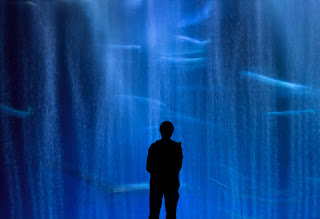- Warren Weaver (1894 - 1978)
Science and complexity
Tuesday, May 30, 2023
Subtle Interconnections
Monday, May 29, 2023
Limits of the Possible
1. When a distinguished but elderly scientist
states that something is possible,
he is almost certainly right.
When he states that something
is impossible, he is very probably wrong.
2. The only way of discovering the
limits of the possible is to venture a
little way past them into the impossible.
3. Any sufficiently advanced technology
is indistinguishable from magic."
- Arthur C. Clarke (1917 - 2008)
Sunday, May 28, 2023
Doors and Landscapes
Saturday, May 27, 2023
Finite Worlds
- Douglas Adams (1952 - 2001)
The Restaurant at the End of the Universe
Note. The image is a "quick grab" with my iPhone of some lights on the ceiling of the hotel my wife and I recently stayed at in Monterey, CA. A basic photography lesson I learned and embraced long ago (though occasionally still forget to apply; happily, not this time) is this: if you are in a "dull, dull, insufferably dull" place for image taking (or, at least, think you are - like standing around in a hotel lobby with nothing to do or to "look at"), just look up or down ... something is sure to catch your eye 🙂
Friday, May 26, 2023
Mysterious Worlds
- Fyodor Dostoyevsky (1821 - 1881)
Brothers Karamazov
Thursday, May 25, 2023
Talking to a Rock
lived alone in a small temple in the country.
One day four traveling monks appeared
and asked if they might make a fire
in his yard to warm themselves.
Hogen heard them arguing about
subjectivity and objectivity.
He joined them and said:
'There is a big stone. Do you consider it
to be inside or outside your mind?'
'From the Buddhist viewpoint everything
is an objectification of mind, so I would
say that the stone is inside my mind.'
'if you are carrying around a stone like that in your mind.'"
- "The Stone Mind," Shaseki-shu (Collection of Stone and Sand)
The monk replied, 'I’ve been talking to a rock.'
Yunyan said, 'Did it nod to you (indicating that it understood you)?'
When the monk didn’t reply, Yunyan answered for him:
'It nodded to you before you even said anything.'"
- Yunyan Tansheng (780-841)
Wednesday, May 24, 2023
Quiet Light II
- John O'Donohue (1956 - 2008)
To Bless the Space Between Us







